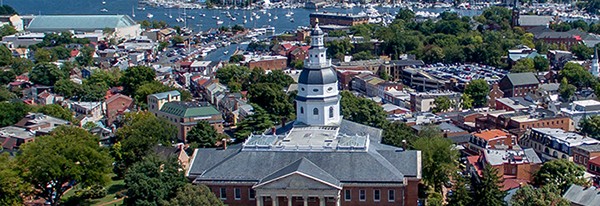Date:
Source: Capital Gazette, Angela Roberts
As the blazing sun beat down on Annapolis’ streets and historic storefronts, Dr. Tim Chapin spelled out the not-so-distant future of transportation for a city deeply invested in remembering its past.
Self-driving cars are coming, said Chapin, the dean of Florida State University’s College of Social Sciences and Public Policy. In just about 40 years, maybe less, our roads will be dominated by fully autonomous vehicles.
“The automobile about a century ago completely changed America and the planet, and it’s my view that (autonomous vehicles) and the sharing economy are going to transform the planet again,” Chapin said.
Urban areas will eventually have to rethink their blueprints to meet evolving transportation needs — why not start now?
That’s the question that drove Historic Annapolis and the City of Annapolis to invite Chapin to be the latest speaker for their “Reimagining City Dock” series — a component of the partnership’s longterm mission to make sure development of the dock respects its rich roots.
After all, Annapolis is successful today because of smart decisions made in the past, said Historic Annapolis President and CEO Robert Clark — the last thing the organization wants is to shy away from smart ideas for the future.
“I don’t think Historic Annapolis has to look backward all the time,” he said.
Chapin — who is considered an expert on land use and comprehensive planning, growth management and urban redevelopment — address the public Tuesday night at Maryland Hall, but he started out the evening by chatting with city leaders about transportation’s trajectory.
Mayor Gavin Buckley and Alderwoman Elly Tierney — as well as representatives from the Planning Commission, the Department of Public Works and the Department of Transportation — listened closely to Chapin. Tierney, D-Ward 1, recently proposed raising parking meter fees at the dock from $2 to $4 as part of the effort to push cars away from the waterfront.
In the future, Annapolis’ streets will be dominated by people, not cars, Chapin said. Rather than own a vehicle, Chapin said people will likely have a subscription to a car service. Self-driving cars will drop riders off, drive to a nearby parking garage, then come back when called.
How will this change city landscapes? Well, Chapin said experts are still figuring that out, but it will almost certainly mean more space for sidewalks and bike lanes. Driverless vehicles require smaller lanes than driver-full vehicles, as they move in a much straighter path.
During the transition period to full-autonomy, when there are still drivers on the road — self-driving cars are going to be pricey at first, just like how CD players were originally a whole lot more expensive than they are now — Chapin said there may be separate lanes for autonomous and non-autonomous vehicles.
Eventually, however, Chapin said there will be no stoplights.
“We’ll have free-flow intersections,” he said. “The cars are all talking to each other in real time. And they navigate through these intersections.”
This future might be a bit of ways down the road, but city leaders will keep Chapin’s lecture in mind as they draw up future plans for developing Annapolis, said Karen Theimer Brown, who leads Historic Annapolis’ preservation division. The key is acting proactively to this change, rather than reactively.
And Historic Annapolis holds an important role in this activity, Theimer Brown said: “Making sure that our historic fabric and resources are celebrated and integrated in any future planning.”


